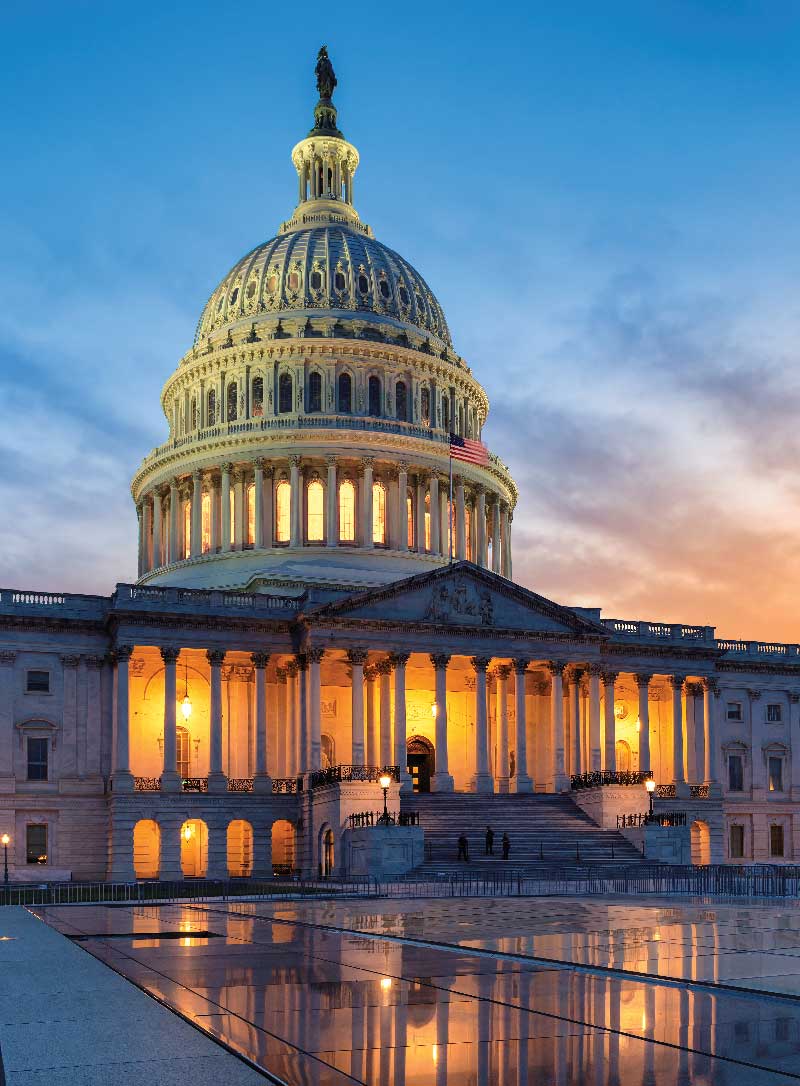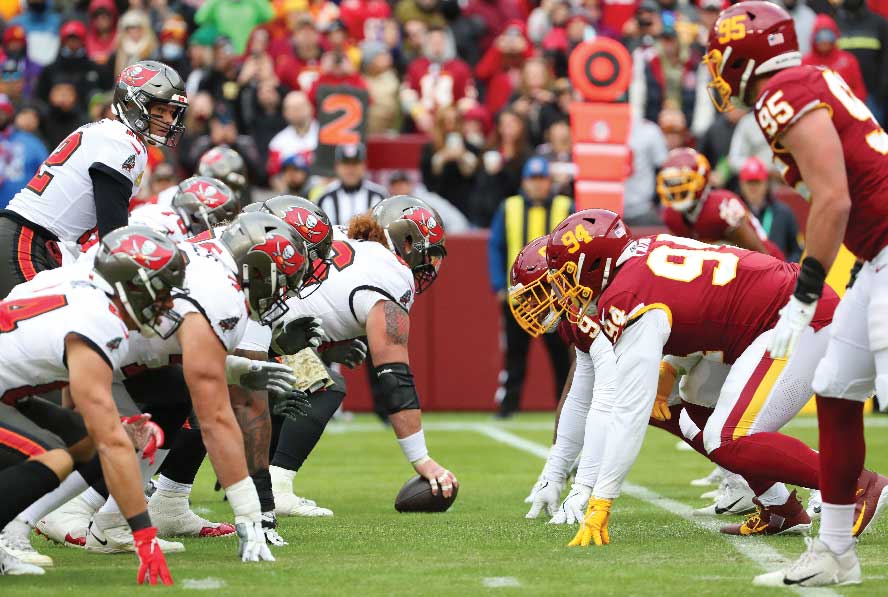With many Asian gaming jurisdictions wondering what the coming years will look like as borders start to reopen, the experience of the United States – which recorded all-time record revenues in 2021 – gives reason for optimism.
After COVID-19 ravaged the global gaming community, 2021 was a very, very good year for commercial gaming in the United States. Gross gaming revenue grew by 73% year-on-year to a record US$53 billion according to the American Gaming Association, and by 21% compared with 2019 – the previous record holder.
 Between 2015 and 2019, nationwide GGR – comprising casino, VLT, sports betting and iGaming – grew at an average of 3.3% per year. It had been a consistent and long-term trend, but in 2021 it exploded.
Between 2015 and 2019, nationwide GGR – comprising casino, VLT, sports betting and iGaming – grew at an average of 3.3% per year. It had been a consistent and long-term trend, but in 2021 it exploded.
By any measure and in every category, GGR in the United States grew dramatically last year. That may not have been such a difficult task compared to 2020, when the gaming industry was burdened with nationwide closures and operating restrictions. After all, it wasn’t until the fourth quarter of 2020 that most jurisdictions finally reopened. Masks, social distancing, limited capacity and other restrictions persisted into the first quarter of 2021. However, even with these remaining restrictions, nearly every jurisdiction in the country was experiencing record levels of revenue every month.
 During the full calendar year 2021, commercial casinos and VLTs generated US$46 billion in GGR, Indian casinos are estimated to have produced between US$46 billion and US$50 billion, and sports betting and iGaming US$7.6 billion. Lottery sales were approximately US$95 billion while US$12 billion was wagered on horse races. Each category produced more revenue or sales than in 2020 and in most cases more than the previous record year of 2019.
During the full calendar year 2021, commercial casinos and VLTs generated US$46 billion in GGR, Indian casinos are estimated to have produced between US$46 billion and US$50 billion, and sports betting and iGaming US$7.6 billion. Lottery sales were approximately US$95 billion while US$12 billion was wagered on horse races. Each category produced more revenue or sales than in 2020 and in most cases more than the previous record year of 2019.
The factors contributing to this growth are complicated. The US has dozens of different jurisdictions and at least seven separate categories of gambling; each is driven by different factors.
 The United States has no overarching gambling law, regulation or taxation rate. There are 25 separate commercial casino jurisdictions, 29 states have Indian casinos, 40 states offer some form of legal horse racing and 45 states have a lottery. Each of those jurisdictions has an individual set of laws, regulations and taxing procedures for those activities. It is not uncommon for one state to have a commission and regulatory agency for casinos, another for lotteries, one for horse racing and another for video lottery machines (slot machines located outside of casinos). In each state with Indian casinos there are two separate commissions, one tribal and one state. Indian casinos are governed by a federal legislation and regulation, a treaty called a tribal-state compact and a set of regulations specific to each compact.
The United States has no overarching gambling law, regulation or taxation rate. There are 25 separate commercial casino jurisdictions, 29 states have Indian casinos, 40 states offer some form of legal horse racing and 45 states have a lottery. Each of those jurisdictions has an individual set of laws, regulations and taxing procedures for those activities. It is not uncommon for one state to have a commission and regulatory agency for casinos, another for lotteries, one for horse racing and another for video lottery machines (slot machines located outside of casinos). In each state with Indian casinos there are two separate commissions, one tribal and one state. Indian casinos are governed by a federal legislation and regulation, a treaty called a tribal-state compact and a set of regulations specific to each compact.
Often, each separate tribe within a state has a unique compact. And importantly, for the purposes of revenue comparison, tribal revenue is not public information. Tribes may “share” revenue with the state, but states cannot tax tribes. The tribes that share revenue do report revenue to the state, but it is not public information. Connecticut is an exception.
With the spread of legal sports betting, tribes in many – but not all – states are subject to the same laws, regulation and taxes as other commercial gaming outlets. There are other complications in drawing a complete picture of gaming in the United States. Lotteries report sales, the equivalent of handle in sports and racing, but not always net revenues – the equivalent of GGR for casinos – and they don’t always report monthly, but rather by a fiscal year, which differs from state to state. Horse racing reports handle, not win, and the timing of the reports varies widely.
Thus, only the gross gaming revenue reported by 25 state jurisdictions is consistent. The rest are something less. And yet even with those qualifications, it is still possible to say that the total gaming revenue generated in 2021 was the most ever in the United States. Compared to the rest of the world, that is an anomaly.
There are several reasons for this. In general, COVID-19 restrictions were in place for a shorter length of time and were less egregious as compared to other countries. In the US, each jurisdiction has a local customer base, and those customers were able to visit local casinos by car without resorting to air or other forms of public transportation.
 Las Vegas is the single exception, given that it is highly dependent on air-travel, conventions and international travelers. But even without any meaningful revenue as a result of conventions and mass entertainment events, the Las Vegas Strip enjoyed a record year.
Las Vegas is the single exception, given that it is highly dependent on air-travel, conventions and international travelers. But even without any meaningful revenue as a result of conventions and mass entertainment events, the Las Vegas Strip enjoyed a record year.
The situation in the US is in stark contrast to Asia, where most gaming jurisdictions rely on international travel for at least a significant portion – and often a majority – of their revenues. Macau is an outlier in that it shares a land border with mainland China, but ongoing COVID-19 restrictions imposed on that border continue to limit visitation, with the 7.7 million arrivals into Macau in 2021 still down 80% on 2019 numbers.
In the United States, newly legalized gaming options have become the most significant reason for the growth of gaming revenues following a decision by the US Supreme Court in May 2018 which struck down a 1992 federal law banning commercial sports betting in most states and instead gave each state the power to determine its own destiny.

In the first year after the decision, seven states legalized sports betting. By the end of 2020 that number had grown to 14 and in 2021 there were 27 states with legalized sports wagering. Handle grew accordingly, up to US$52.5 billion in 2021, with win of US$3.9 billion. Notably, handle grew slowly for the first nine months of 2021, but from September onwards it took a giant leap forward.
In September, the National Football League season began without the many COVID-19 restrictions that plagued the 2020/21 season, and as a consequence handle jumped by around US$2 billion a month. Betting on professional football highlighted the importance of online, remote and mobile sports betting. Remote betting accounts for 90% of the total wagers, so as the legalization of remote betting has spread, both handle and GGR have grown dramatically.
The other new growth segment was iGaming, up from virtually zero in 2018 to US$3.6 billion in 2021. Although sports betting and iGaming were not the only areas of growth, their combined US$7.6 billion accounts for a significant portion of the total growth. In fact, in those states with both mobile sports betting and other forms of iGaming, casinos revenues were either flat or declined.
This highlights another trend that is significant – in 2021, fewer people went to a casino than in the pre-pandemic years, and in some months there was decline even compared to 2020. In every state that measures visitation there was a decrease, sometimes as much as 20%, when compared to 2019. However, the spend per person or per visit has risen significantly.

There are several theories on this subject. They include pent-up demand, a lack of competing entertainment, utilization of government subsidy payments and excitement around sports betting due to increased coverage.
There is probably no single cause, and all of those factors likely played into the equation, but the issue does pose one very important question: is it sustainable?
The growth generated by sports and iGaming certainly is, at least in the short-term. There are more states that will legalize both activities and states with retail sports betting only are considering making the switch. The numbers are simply too large to ignore.
The future of growth in retail casino gambling is much less certain. As with the spread of sports betting, there are still states that might in time legalize commercial casinos. As long as capacity is added, revenues will continue to grow. Yet regardless of future growth rates, 2021 will stand out as a pivotal point in the history of gambling in the United States. Seeing it is easy, explaining it not so.





























